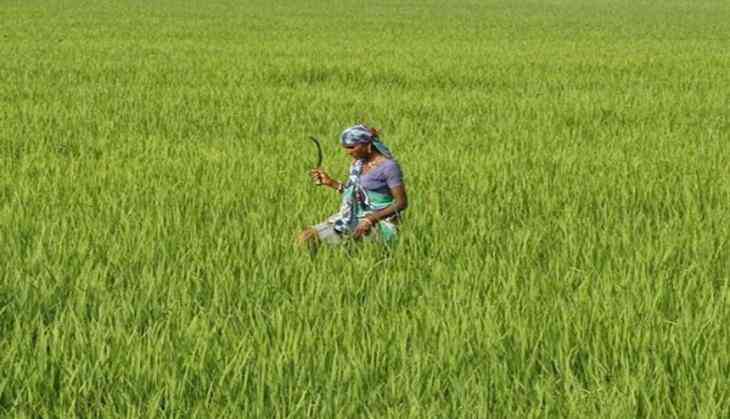Farm loan waivers may be in focus. But will they do the trick

The ongoing stress in India's agriculture sector has become a political point, as expected. Political parties in power do not want farm sector distress to be their Achilles Heel. Those not in power, see the duress as an issue to be exploited.
Prime Minister Narendra Modi has routinely talked about “doubling” farmers' income. Why not waive off their debts? his detractors have asked. Several states have, in fact, already taken it up as an option.
But how feasible is all this? Will they solve the problems of those dependent on the farm sector?
Regarding Modi's claim of doubling farmers' income in five years, there is hardly any indication of that happening anytime soon. On the contrary, farmers are finding it tough to even recover input costs. Sugarcane in Uttar Pradesh, mangoes in Karnataka, garlic in Rajasthan – in state after state, farmers have been dumping their produce on streets.
Waivers, on the other hand, have surely paid rich dividends in the past, especially to the United Progressive Alliance (UPA) government. Question is: can it be a sustainable model?
Several political analysts have said it could have been difficult for the UPA to return to power in 2009, but for the waiver package the previous year. It totalled Rs 72,000 crore.
A decade later, packages from different state governments have already crossed Rs 1 lakh crore. The way waivers are being announced in state after election-bound state, the amount may jump another 25-30 per cent.
Meanwhile, farmers in India continue to take their lives. Take the case of Vidharbha: A waiver covering 35 lakh farmers has not been able to stop suicides. Times of India reported 428 farm suicides in the six districts of the region this year until now, on top of 600 deaths last year.
An average 12,000 farmers kill themselves in the country every year. More than two-thirds were in five states – Maharashtra, Andhra Pradesh, Karnataka, Madhya Pradesh and Chhattisgarh – but the numbers in other states are gradually rising.
Which brings us back to the question: Waivers can win votes perhaps, but what about the long run?
Why so bleak
At the time of independence, agriculture contributed nearly half of the country's gross domestic product. That has now declined to 18 per cent while still supporting half the country's population.
India's average monthly per capita farm income of Rs 6,498 is 30 per cent below the total average of Rs 9,315. The risk, however, is much more. Forget 'Everybody Loves a Good Drought', we seemed to have entered an era where everybody cherishes a good crash – in prices of farm produce.
Be it unnecessary imports of lentils, or curbs on export of cotton in years when farmers can get good prices, there always seems to be a force at work to ensure prosperity of farmers remains a political slogan.
Urbanisation of economics
Several economists have time and again said India does not “need” so many hands in the farm sector. They need to be put into manufacturing and services sectors.
This school of thought dominated the two UPA terms, and was forcefully advanced by the Modi-led National Democratic Alliance government. That has led to an increase in urban slums, where children of farmers languish with slightly higher incomes (than back home) but in horrible conditions.
Where lies the solution
Waiving farm loans become a moral obligation for government that write off corporate debt to “boost economic growth”. But that does not guarantee the farmers a promising future. While business tycoons do not fret despite running up debts worth lakhs of crores, farmers hang themselves after borrowing even Rs 1 lakh.
Whoever be at the helm, the UPA or the NDA, the need of the hour is a radical solution. A starting point can be to stop considering farmers as anathema.
“We cannot improve the condition of farmers by looking at the agri-economy in isolation. We have to recognise that the rural economy runs on cash,” Pronab Sen, former chief statistician of India, said.
He stressed the need for supporting price rise in farm commodities. “There has been a constant reduction in prices of agricultural goods since 2014, compared with non farm goods. This has hurt farmers,” he added.
“The average annual growth (in minimum support price) between agriculture years 2009 and 2013 was 19.3 per cent. It was only 3.65 per cent between 2014 and 2017,” economist CP Chandrashekhar wrote in the Hindu Businessline, quoting data from analysis firm Crisil.
Taking that data as the basis of income generation, it looks impossible to double farm incomes from 2017 levels by 2022, as the PM has claimed he would.
Some even doubt the efficacy of MSPs. According to agricultural economist YK Alag, MSPs do not matter in today's time as they benefit mainly those growing rice and wheat.
“We need to look at all agri products and their price realisations. Since 2014, terms of trade for agriculture produce has turned negative by 4 per cent. Incomes of those engaged in non-farm activities, on the other hand, increased 6 per cent. This needs to be balanced,” he said.
But how does a government increase farm incomes while keeping inflation in check?
After the UPA years of high food inflation, India adopted a new monetary policy framework in August 2016. It mandates the Reserve Bank of India to control Consumer Price Index (CPI) between 4 and 6 per cent for five years.
“Food prices have a weightage of 50% in CPI. The current monetary policy framework will never let farmers to realise growth in incomes,” Sen said, arguing for a re-look at the monetary policy framework.
Supporting farm income
It is difficult to immediately reduce the number those dependent on agriculture immediately. So, their incomes should be supplemented by other sources.
The Mahatma Gandhi National Rural Employment Guarantee Scheme (MNREGS) was designed to reduce farmers' distress through extra income. In the last four years, however, states have complained of not receiving sufficient funds for the scheme.
A study conducted by Rajendran Narayanan of Azim Premji University last year found massive delays in payments to workers under MNREGS.
There may be no proven co-relation between farm suicides and such delayed payments, but the scheme did help increase rural wages since being launched in 2005.
While policymakers try to find a way out of, it would help if wage payments are eased.
The fact remains that the political war over farm suicides needs to be backed by a suitable policy framework. Short-term measure like loan waivers may fetch some votes, but would not be able to secure the lives of those who feed 1.3 billion Indians.
First published: 22 June 2018, 10:15 IST

